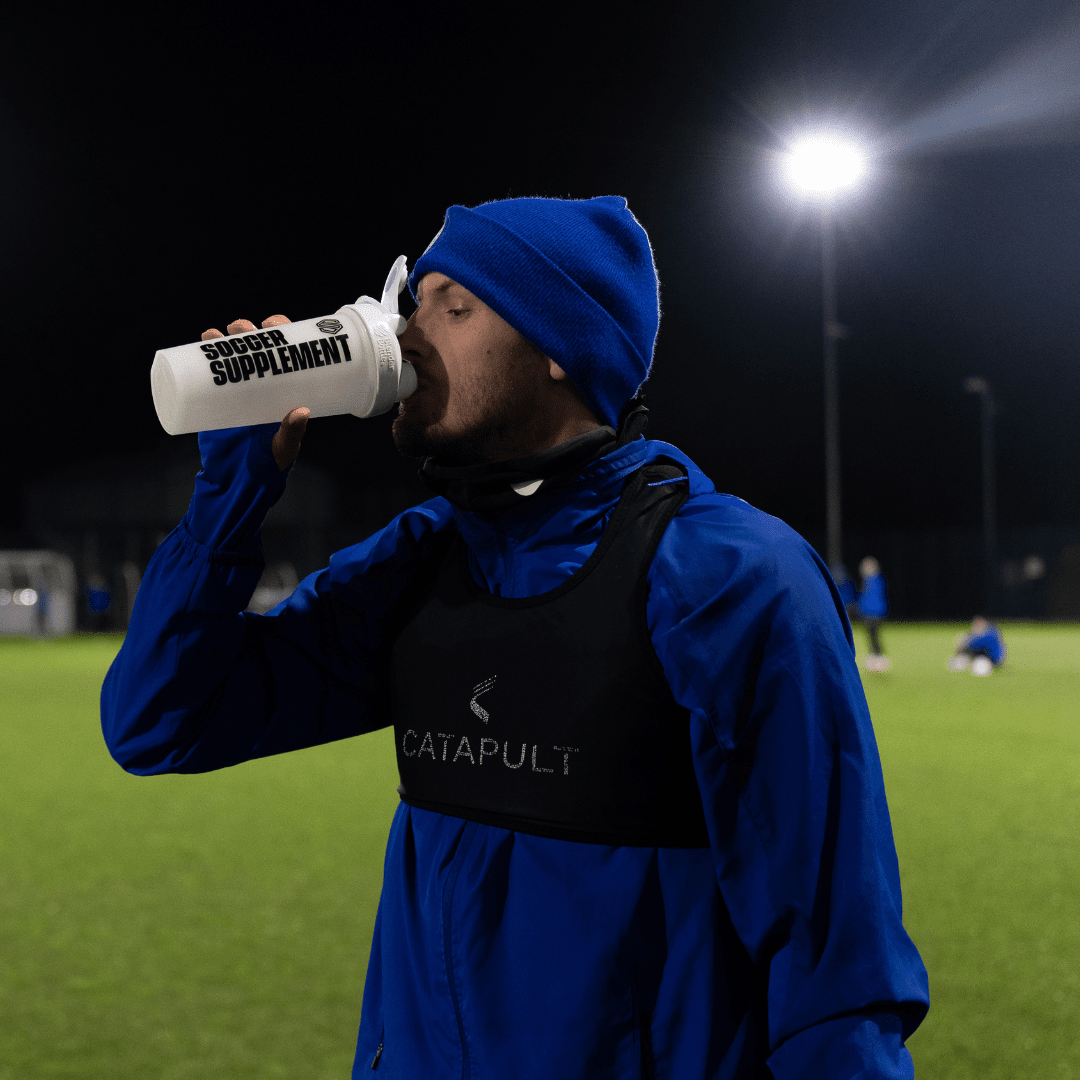Football training is an art. It’s the difference between winning and losing. It’s staying on the pitch for the whole game rather than limping off exhausted at halftime. But like any art, there’s no one way to approach it. Every club and player trains to suit their style of play.
There are too many football training methods to list. But they can split into three branches: physical, technical and tactical. Having a deep understanding of each branch is vital for players looking to improve their game. Top clubs use all three branches in their training to keep their teams performing and ready for matches.
At Soccer Supplement, we know how vital training is for the beautiful game. Of course, it’s more than a kickabout with your teammates — but that does play a part. That’s why we’ve put together a breakdown of the three branches of football training. It gives you access to professional training methods and how to make the most of them to up your game.
Football Training Method #1: Physical Training
Physical training is the most straightforward football training method. Its purpose is to build strength and boost fitness to stay on the pitch for the full 90 minutes.
But while the training is straightforward, getting to that level of fitness requires hard work and discipline. Without it, you’ll struggle with the technical and tactical work needed to win matches. It doesn’t matter if your skills put Ronaldo to shame if you can’t keep up.
Physical training involves work on specific skills, such as:
- Strength
- Power
- Endurance
- Mobility
- Stability
- Recovery
Each skill is vital to improving your fitness, and failure to work on one of them can damage your performance. You’ll build your fitness in team sessions with running, jumping and shooting. But the majority of the hard work will be down to you, especially if you play in the lower leagues.

Aerobic Training for Football
Most professional footballers cover between 10 and 12km every game. Last season, Leander Dendoncker ran 13.21km in a single game to break the Premier League record. Aerobic training and fitness have become a vital part of the game at any level.
Even at an amateur level, players run an average of 7km per game, and it’s no surprise why. The modern game requires players to run for days, up and down the pitch to support attackers and get stuck in and help out the defenders.
Working on your aerobic endurance is relatively straightforward. You can’t go wrong with sticking to tried and tested methods like running, cycling and rowing. But try to mix up your training schedule to keep it fresh and varied. Use longer steady-state cardio sessions and short sessions of high-intensity work for a good balance

Strength Training for Football
Running throughout the game is essential, but it’s critical not to neglect strength training. It helps with tackling, beating defenders one-on-one and winning headers. But strength training offers other benefits, such as:
- Reducing the risk of injury
- Better balance control
- Increasing powerful movement.
The demands of complete physical training mean you could easily find yourself at the gym every day. Any player keen to develop their fitness may also consider working with a personal trainer (PT). Getting a PT will help you to work out a safe and sensible week-by-week plan. The plan will include cardio work, strength training and, importantly, recovery.
On that note, regardless of your schedule and enthusiasm, always make time for recovery. Rest and nutrition are vital for a complete recovery. But recovery isn’t just after a training session; it’s also part of your preparation. By eating a balanced meal with an appropriate amount of complex carbohydrates before training, you can give your body the energy it needs to train and reduce recovery time.
Following a training session or a match, drinking a recovery supplement like Recover90® will give your body everything it needs to repair and be ready for the next day’s session.
Football Training Method #2: Technical Training
It’s time to get the football cones, agility ladders and bibs out. Technical training puts all the work from physical training to good use and hones it for matches. It’s where you work on your football-specific skills both individually and as a team.
Technical training makes up the bulk of what happens in team training sessions, especially at lower levels. The team will work through exercises or drills throughout the training session to master specific skills and techniques.
In team training sessions, you’ll work on drills for:
- Passing
- Tackling
- Ball control
- Possession
- Positioning
- Finishing
One of the most common technical training drills is “Pass, move, receive”. A square is set out with the trusty cones, and there are six players and two balls. The goal of the drill is to improve passing and receiving. Players will receive the ball with one touch, pass with the next and move before receiving another ball.

While most technical training will be as a team, there’s plenty that players can do on their own in the garden or at a park. You won’t be able to work on tackling and passing drills on your own, but you can develop your footwork and agility.
Check out our football training drills for some inspiration.
Football Training Method #3: Tactical Training
Tactics are the core philosophy of a team. They’re the reason that Tika-Taka is synonymous with Barcelona, and route one comes with any team managed by Big Sam.
Almost every major club is now associated with a specific style of play directly influenced by their tactical training. All the top clubs use tactics to outwit and defeat opponents.
Tactical training is critical for decision making on the pitch. It determines those split moment decisions that can turn a game on its head. The training affects the way the team and players act and react to unfolding situations.
Tactical training is broad and includes:
- Set pieces
- Formations
- Attacking routines
- Defensive manoeuvres
Tactics determine whether a team will play a high line like Guardiola or park the bus like Mourinho. Ultimately, tactical training is the stuff that can win games. It’s that moment you see a killer through-ball or your team scores from a perfectly executed free-kick or corner.
Tactical training is both physical and theoretical. While a lot of it happens on the training ground, just as much will occur in a classroom environment. Teams of all levels work on tactical training, but the upper echelons place particular emphasis on it. Teams and coaches will look at video analysis of both themselves and the opposition to see what they’re doing well and where their weaknesses are.
One of the best examples of video analysis before a big match is Petr Cech for the 2012 Champions League final. Cech spent hours watching Bayern Munich penalties, and when the shootout rolled around, he dived the right way for every single penalty.
Using All 3 Football Training Methods
There is no single aspect of football training that stands out as the most important. All three branches of football training overlap, and you should focus on each one as much as the others.
If you focus too heavily on one, you’ll be less prepared for games, and your performance will suffer. You can be as fast and strong as you want, but if you can’t pass accurately or control the ball, you’re not living up to your potential. Equally, your team may have the best free-kick strategy in the league, but if half of your players are hunched over, gasping for air, you’re unlikely to score.
To get the most out of your training sessions, you should dedicate the time to all three branches. Work out a training schedule that works for you and your team and incorporate each training branch. Add a well-balanced diet and rest and recovery, and you should start to see massive improvements on and off the pitch.
Click here to shop our range of Elite Footballer Supplements
Updated June 2022









